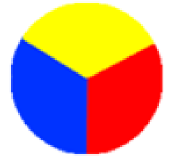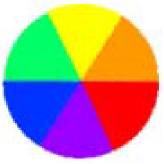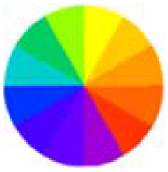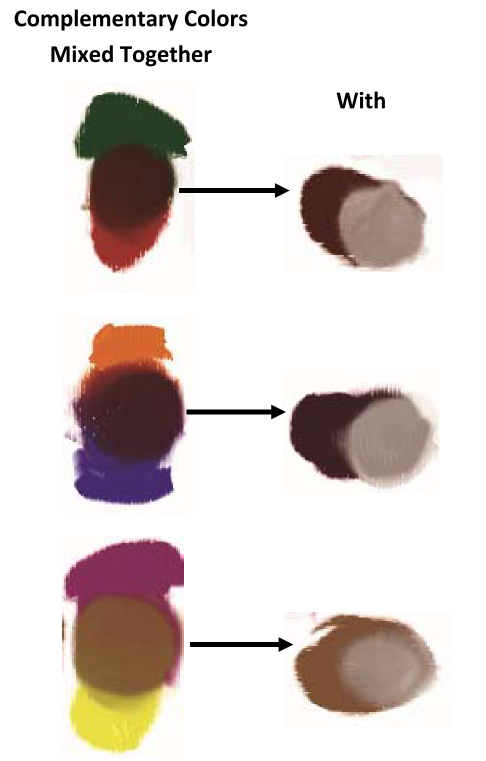The color wheel shows the relationship of the various colors to each other. By understanding this relationship, you will have a much easier time when it comes to mixing custom colors. You will know what colors to add together to get a different color, and what to use to cancel out certain colors.

Primary Colors
Red, Yellow, Blue
These three colors cannot be created by combining any other colors. All colors are derived from these three hues.

Secondary Colors
Green, Orange, Purple

TERTIARY COLORS
Yellow‐Orange, Red‐Orange,
Red‐Purple, Blue‐Purple,
Blue‐Green, Yellow‐Green
The Language of Color
These are the terms that are used to describe color:
Hue
Hue is simply another name for a color.
Color Temperature
All colors are described as being warm or cool.
If you look at the color wheel, you will see that the colors on one side (red, orange, and yellow) are classified as warm colors. The colors on the opposite side of the wheel (green, blue, and violet) are cool colors. All colors have a bias towards either warm or cool.
Complementary Colors

Complementary colors are colors that are directly across from one another on the color wheel. Complementary colors always consist of a primary and a secondary color, or two tertiary colors. Complementary colors are always one warm and one cool. When placed next to each other, they have the effect of making each other look more intense (yellow/purple, blue/orange, and red/green).
Neutral Colors
Complementary colors placed next to each other make each other look more intense, however when you mix them they will

neutralize their intensity. This is a good way of darkening a color without adding black. It is also the way to make a whole range of browns. By mixing equal amounts of the two complementary colors and then adding varying amounts of white, you can make a whole range of grays.
Tint
Tint is a color that is mixed with white. A tinted color can range from the original color, all the way to white.
Shade
A shade is a color that has been darkened by the addition of a dark color, like black or the color’s complementary color. The color is not altered dramatically, only darkened. A shade can range from the original color, all the way to black.
Value
Value describes the lightness or darkness of a color. Yellow has a light value. Black has a dark value.
Intensity
Intensity refers to the brightness or saturation of a color. A brilliant yellow and a deep rich blue are said to be intense or saturated. The intensity does not refer to value. The yellow is light in value whereas the blue is dark in value.

Tinting Strength
Tinting strength describes the degree to which a color will tint white. Phthalo Blue has a very high tinting strength, so you will need to add very little to tint white. Organic Yellow has a low tint strength and requires that you add a larger amount to tint white.
Complementary colors mixed together will neutralize each other.


